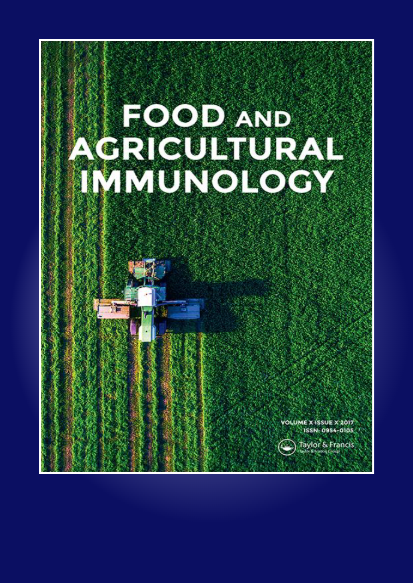Different iron sources affected haemoglobin and myoglobin synthesis, and gene expression related to iron metabolism in skeletal muscle in piglets
IF 2.1
3区 农林科学
Q3 CHEMISTRY, APPLIED
引用次数: 0
Abstract
ABSTRACT This study was carried out to investigate the effect of different iron sources on haemoglobin and myoglobin (Mb) synthesis, and the mRNA expression of the key genes related to iron metabolism in the skeletal muscle of piglets. Forty-eight piglets were assigned into four treatments including control group, ferrous sulphate (FeSO4) group, ferrous glycinate (Fe-Gly) group and amino acid-Fe(II)-chelator complexes group. The results showed that iron supplementation increased Mb concentration in muscles (P < 0.05). In addition, iron supplementation increased hephaestin (HEPH) expression in the longissimus dorsi muscle (P < 0.1), decreased transferrin receptor 1 (TFR1) expression in the longissimus dorsi muscle (P < 0.05) and increased lipocalin 2 (Lcn2) expression in gastrocnemius muscle, respectively (P < 0.05). In summary, compared with high-dose inorganic iron, low-dose organic iron supplements have the same effects in haemoglobin and myoglobin biosynthesis, and mobilize iron in muscles into circulation.不同铁源对仔猪骨骼肌血红蛋白和肌红蛋白合成及铁代谢相关基因表达的影响
本文章由计算机程序翻译,如有差异,请以英文原文为准。
求助全文
约1分钟内获得全文
求助全文
来源期刊

Food and Agricultural Immunology
农林科学-毒理学
CiteScore
5.30
自引率
6.70%
发文量
52
审稿时长
2 months
期刊介绍:
Food and Agricultural Immunology is an international open access journal publishing original immunological research with applications in food, agricultural, environmental and veterinary science. Submissions describing the use of immunological techniques and methods are particularly welcomed.
The journal aims to expand our understanding of the interactions at the interface of food and immune systems including studies on:
-Development of diagnostic systems – all types of ligand-based assays, e.g. antibody, aptamer
-Application of ligand-based assays for the detection or identification of molecules of interest in food science, agricultural research, veterinary investigations and clinical systems relating to food allergy or sensitivity to agricultural chemicals
-Effects of food on the immune system
-Studies on allergy and allergic reactions
-Investigations into food allergies
-Development of allergen-free food systems
-Development of novel assay formats
-Applications of assay systems to the monitoring of food items in relation to safety and labelling
-Food quality issues, e.g. speciation, adulteration and contamination
-Comparisons between different analytical techniques
The journal publishes research and review articles and is essential reading for food scientists, immunologists and all those concerned with the interaction between food and immune systems.
 求助内容:
求助内容: 应助结果提醒方式:
应助结果提醒方式:


